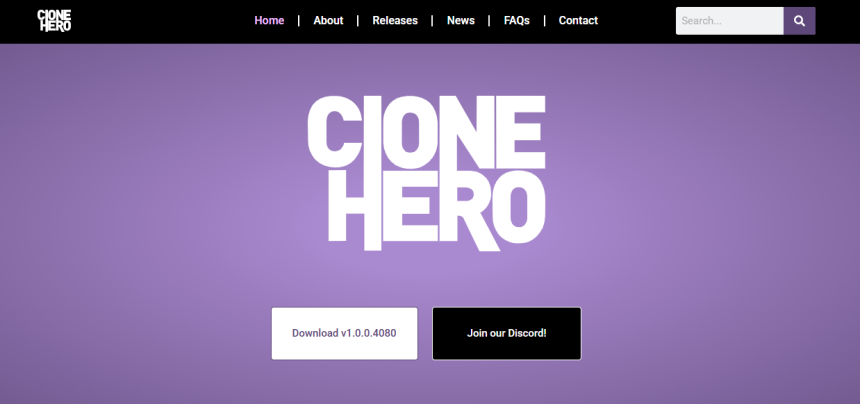Clone Hero isn’t just a nostalgia trip—it’s a fully-fledged, cross-platform rhythm game that’s found an unexpected resurgence among both new and veteran gamers. Modeled initially after the Guitar Hero franchise, Clone Hero offers more than imitation; it empowers players to take control of their rhythm gaming experience on Windows, Mac, Linux, and even Android.
Unlike the closed ecosystem of traditional console rhythm games, Clone Hero thrives on openness. Players can load custom songs, build their own libraries, and fine-tune gameplay mechanics. Its thriving community and vast song database have transformed it from a passion project into a global rhythm sensation.
The platform in question—PC gaming platforms and fan-supported download hubs—has become the home of Clone Hero. Here’s a breakdown of what makes it a go-to destination for rhythm game lovers and why Clone Hero continues to dominate attention in these digital spaces.
Community-Driven Development Powers the Experience
Clone Hero’s developers have always leaned into user feedback. The entire structure of the game is open, allowing constant updates and community contributions. Rather than waiting for official content packs or DLCs, players can instantly integrate thousands of songs from fan-curated libraries.
This grassroots approach encourages innovation and personal investment. Players don’t just play Clone Hero—they shape it. From modding charts to adjusting the note highway appearance, everything about the game feels customized and adaptable.
This model works perfectly on platforms like GitHub, Itch.io, and fan forums where open-source energy thrives. The software remains free, which removes a significant barrier to entry and invites players of all skill levels to join in.
Song Libraries Keep the Game Fresh
A rhythm game lives or dies by its soundtrack. Clone Hero’s true magic lies in its custom song support, made possible through .chart and .mid file imports. Fans have uploaded thousands of tracks spanning rock, metal, pop, anime, and even meme music.
Instead of being restricted by licenses and record labels, Clone Hero enjoys freedom of variety. Music lovers get access to tracks they’d never find in traditional rhythm games. Rare live performances, unreleased demos, or niche tracks become playable content.
This flexibility allows Clone Hero to appeal to a broad audience, from metalheads to K-pop fans, from casual players to speed-run experts who specialize in ultra-difficult songs. The community keeps growing because the game itself never gets stale.
Customization at Every Level
Personalization extends beyond music. Clone Hero users can alter highway colors, note shapes, background animations, and HUD elements. Skins, themes, and visual effects are all customizable. This is more than aesthetic—it creates a sense of ownership.
Whether you want a minimal, distraction-free layout for competitive play or a flashy, color-drenched highway for party sessions, the platform makes it possible. No other rhythm game offers this degree of visual flexibility, especially not on consoles.
This has contributed heavily to the game’s popularity on PC-centric platforms, where players are already accustomed to modding and personalizing their software. Clone Hero fits seamlessly into this ecosystem.
Cross-Platform Compatibility Expands Access
Clone Hero isn’t bound to a single device. You can play it on Windows, macOS, Linux, and Android. This level of compatibility dramatically expands its reach. No expensive console required, and no platform loyalty needed.
The Android version, while slightly limited, still allows rhythm gamers to jam on the go. Meanwhile, Mac and Linux support makes the app accessible to users often excluded from mainstream gaming software.
This broad support structure makes Clone Hero ideal for digital distribution and explains why platforms that cater to open-access or cross-platform tools have become its stronghold.
Instrument Support Builds Authenticity
Clone Hero supports real Guitar Hero and Rock Band peripherals. Does that mean those plastic guitars are gathering dust in your closet? They’re back in action. Players can plug in legacy USB controllers and immediately start playing.
Support is expanding for drummers and vocalists, with active beta features in development. Meanwhile, keyboard play is fully supported and customizable, making it accessible even without a plastic instrument.
This hardware compatibility—especially with niche or older equipment—makes it particularly popular on PC-based platforms where users can install drivers and make tweaks as needed.
Content Creators Drive Popularity
The rise of Clone Hero owes much to content creators. YouTube channels and Twitch streamers frequently showcase high-skill gameplay, meme charts, or bizarre custom songs. These performances go viral, pulling curious gamers into the Clone Hero community.
Streamers love Clone Hero because of its endless variety. One day they can challenge themselves to play DragonForce at 150% speed; the next, they can entertain audiences with comedic meme songs. The content is never dry.
Platforms that support high-definition streaming, mod showcases, and downloadable content archives become natural hubs for the Clone Hero community. Sites that facilitate downloads and updates are especially popular, making Clone Hero feel like a living, breathing software rather than a static game.
Tournament and Competitive Play Add Depth
For those who crave more than casual strumming, Clone Hero’s competitive scene is thriving. Online tournaments, Discord-hosted events, and local competitions create a layer of structured challenge.
Scoring is precise, with millisecond accuracy tracked and displayed. Replay systems and performance analysis tools allow players to review their mistakes and refine their skills. Leaderboards and mods for ranked play continue to evolve.
This competitive element gives Clone Hero longevity. It’s not just for party nights—it’s for serious rhythm gamers aiming for perfection.
Modding Culture Fuels Innovation
Clone Hero players are not just content consumers—they’re content creators. The modding culture is enormous. From creating custom charts to reworking the game engine’s behavior, the community continues to push the envelope.
Chart creators often spend hours syncing notes to songs with perfect accuracy. Some mods introduce new features like multiplayer support, visual effects, or experimental game mechanics. These efforts usually originate and circulate through the very platforms that host Clone Hero downloads.
Whether you’re looking for visual mods, sound packs, or full reskins, Clone Hero’s platform allows for deep experimentation. This community freedom drives long-term engagement far beyond what closed-source rhythm games could ever achieve.
Lightweight and Portable
Despite its extensive features, Clone Hero is remarkably lightweight. The software doesn’t demand much CPU or GPU power, making it perfect for lower-end machines. This enables students, laptop users, and even Android players to enjoy the game with minimal lag or crashes.
It also means Clone Hero runs well on platforms that prioritize efficient downloads and portable installations. With no installer needed and no DRM in place, the game can be played straight from a folder. That kind of accessibility is rare and valuable.
No Paywalls, No Ads
Clone Hero is entirely free. No in-app purchases, no ads, and no DLC bundles. This purity is rare in modern gaming and gives Clone Hero a powerful edge, especially among gamers tired of microtransactions.
The Clone Hero platform supports donation-based funding, but never locks features or songs behind a paywall. This has earned it trust among players, making it a fan favorite on forums, Reddit threads, and download portals.
Educational and Creative Benefits
Clone Hero isn’t just a game—it’s a learning tool. Aspiring musicians use it to improve rhythm and timing. Some music teachers incorporate it into rhythm exercises for students. The process of charting songs even teaches basic coding logic and music theory.
On top of that, visual learners and auditory learners both benefit from Clone Hero’s gameplay loop. Memorizing note sequences, reacting to patterns, and developing hand-eye coordination all happen naturally through gameplay.
The fact that this educational layer is built on top of a fun, community-driven platform makes Clone Hero even more compelling, especially for families and educators who discover it through PC-based channels.
Conclusion
Clone Hero’s success on PC and related platforms isn’t random. The game flourishes in environments where flexibility, community input, and customization are valued. Sites that support open-source software, unrestricted downloads, and mod sharing give Clone Hero the ecosystem it needs to grow.
Traditional gaming consoles and app stores—with their licensing restrictions, locked content, and developer regulations—simply can’t match the freedom Clone Hero offers on these platforms. That’s why this game hasn’t just survived—it has thrived.
For rhythm game lovers, music modders, and aspiring speedrunners, Clone Hero isn’t just a pastime. It’s a platform for self-expression, mastery, and community connection. And the platform that supports it most—open-access PC distribution—deserves just as much credit for its rise as the game itself.









